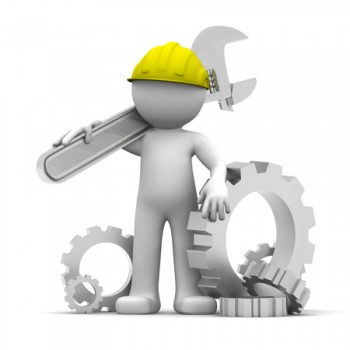Insider Tips for Avoiding High-Cost Service Charges
Software companies know upgrades are necessary for your manufacturing solution. They may even be budgeting for your high-cost service fees. Don’t get...

I don’t know where I first heard the phrase, “If it ain’t broke, don’t fix it?” but it’s become the rallying cry of procrastinators everywhere. Unfortunately, it’s a rallying cry that ends up a funeral dirge or death knell, especially for manufacturers…
Case in point… my neighbor had a rattle in the car engine. It sounded like an engine wheeze – metal on metal. “No big deal,” my neighbor said. “It’s just something loose and the car’s working fine. I’ll get to it before vacation.”
Vacation passed and the rattle continued. Other priorities and expenses came up, so why bother with a rattle that wasn’t hurting anything? That is, until he destroyed the engine on his way to a business meeting. The car overheated, the head gasket blew and it completely ruined the engine. My neighbor missed his meeting, spent more than $4,000 fixing his car, enjoyed a night on the side of the highway waiting for a tow truck, and was forced to coordinate rides to work and trips to the grocery store while the car was fixed.
 Lesson of the story… a simple belt replacement ended up costing him thousands in repairs, plus lost time, missed meetings, and endless aggravation.
Lesson of the story… a simple belt replacement ended up costing him thousands in repairs, plus lost time, missed meetings, and endless aggravation.
Dangers of Waiting to Fix Shop Floor Inefficiencies
It’s a lesson not all manufacturers understand. Software Advice recently released a survey (found here) detailing manufacturing software buyer trends. The report, by Software Advice’s analyst Derek Singleton, identifies paper and spreadsheets as the primary method of tracking manufacturing processes for many of the manufacturers taking the survey. Research by Oracle has shown paper-driven processes increase costs, introduce errors, add complexity and create compliance issues. In fact, 75.9% of companies reported significant business risks due to inefficient document-driven processes, including paper-based processes. So why do so many companies continue to use paper-driven processes to control the shop floor (the heart of manufacturing)?
Because if it ain’t broke, why fix it? If all your shop floor knows is inefficiency and is comfortable with it, then why change?
More than increasing risk, paper-driven processes significantly increase costs for businesses. As reported by Oracle, a study by the Association for Information and Image Management (AIIM) found businesses, “spend $20 in labor to file a document, $120 in labor to find a misfiled document, and $220 in labor to reproduce a lost document,” (www.aiim.org). The money has to come from somewhere, so these costs are either eaten by the manufacturer or passed along to the customers. So why are companies throwing away money on paper?
I go back to my neighbor and the months he spent with a rattle in his engine. He knew he should do something, but other priorities came up and the engine never seemed that bad. “It’s more work to fix than deal with it”, he told me once.
For manufacturers operating in a paper-driven environment, going paperless would mean buying and installing a new system (which takes valuable IT resources), integrating a new process, and training the shop floor. It feels like a lot of work for some nebulous, paperless return. If the decision-maker isn’t a shop floor employee, it is even more difficult to justify the cost since you don’t feel the paper-based shop floor pain on a daily basis… and so, life under, “if it ain’t broke, don’t fix it?” goes on.
 But there is a danger to the, “if it ain’t broke, don’t fix it?” mentality, and the grinding noise in my neighbor’s engine perfectly illustrates it… We recently worked with a manufacturer that repeatedly failed audits due to paper-based record-keeping. In less than a month, we were able to install a system on the shop floor and begin collecting audit-worthy as-built records. Another manufacturer lost a major client because they couldn’t guarantee timely change orders – a simple function in paperless manufacturing and MES. Waiting to fix shop floor challenges isn’t a solution, it means disaster hasn’t struck yet. Worse yet is failing to recognize there is a problem and it needs fixing.
But there is a danger to the, “if it ain’t broke, don’t fix it?” mentality, and the grinding noise in my neighbor’s engine perfectly illustrates it… We recently worked with a manufacturer that repeatedly failed audits due to paper-based record-keeping. In less than a month, we were able to install a system on the shop floor and begin collecting audit-worthy as-built records. Another manufacturer lost a major client because they couldn’t guarantee timely change orders – a simple function in paperless manufacturing and MES. Waiting to fix shop floor challenges isn’t a solution, it means disaster hasn’t struck yet. Worse yet is failing to recognize there is a problem and it needs fixing.
Shop Floor Solutions are Easier (and Cheaper) than You Think
So what does this mean for you and your shop floor?
Another section of the Software Advice study identifies improving or automating processes as the top reason manufacturers purchase new manufacturing software. Other reasons include updating or modernizing their software, additional features and functionality, and company growth. Another part of the study identified improving efficiency as the primary reason companies seek to replace existing manufacturing software. We are seeing a consistent drive to improve the shop floor, and the beginning of a movement away from the “If it ain’t broke…” mentality because people are starting to realize “It is broke”.
Companies are beginning to take control of their own destiny and take action proactively, rather than reactively. The manufacturing marketplace is tightening, and proactive process and efficiency improvements are a competitive advantage for many companies. More and more companies are turning every day to paperless manufacturing and manufacturing software for an advantage.
“If it ain’t broke…” isn’t a recipe for success in modern manufacturing. Take a lesson from my neighbor – if you hear a grinding engine wheeze in your shop floor, get it fixed or you might be stuck waiting while your competition moves ahead. Are there problems you are waiting to solve on your shop floor? Are there problems you don’t even recognize on your shop floor? Are your work processes a victim of the, “it ain’t broke…” mentality? If so, let us know. The solution may be much closer, easier to solve, and less expensive, than you might think.

Software companies know upgrades are necessary for your manufacturing solution. They may even be budgeting for your high-cost service fees. Don’t get...

Many companies ask us about paperless manufacturing and how it fits with other systems. Here’s our response. When discussing manufacturing software,...

Spend enough time in the manufacturing software industry, and you’ll find software experts, manufacturing experts, and plenty of salespeople, but an...